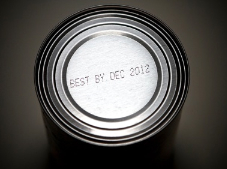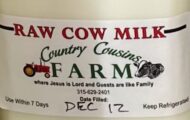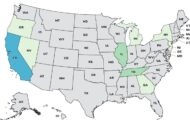 Everyone knows about those use-by or “best by” dates on packaged products. They are used to recall items and are supposed to help consumers make good decisions about the foods they eat. But did you know there is no national standard for these dates, and the expiration dates only apply to food quality, not food safety? The FDA leaves the decision for the date up to the manufacturer. The USDA, which monitors meat, poultry, and egg products, also says that the dates are set by the manufacturer. While some states require date labels, others have no such requirements.
Everyone knows about those use-by or “best by” dates on packaged products. They are used to recall items and are supposed to help consumers make good decisions about the foods they eat. But did you know there is no national standard for these dates, and the expiration dates only apply to food quality, not food safety? The FDA leaves the decision for the date up to the manufacturer. The USDA, which monitors meat, poultry, and egg products, also says that the dates are set by the manufacturer. While some states require date labels, others have no such requirements.
The National Resources Defense Council has written a paper about this issue. They say that since consumers usually discard food past its use by date, they are wasting billions of pounds of food every year, needlessly. [Editor’s note: there is an exception to this rule: packaged salad greens. For food safety reasons, we follow Consumers Union’s advice to buy bagged salads with expiration dates as far into the future as possible, and do not eat them after the use by date.]
A survey by the Food Marketing Institute found that nine out of ten Americans needlessly throw away food. When one in six Americans lacks a secure food supply, this is real waste. There are no binding federal standards on use by dates, and there are many diverse and inconsistent labeling practices in the industry. Date labeling was designed to provide an indicator of freshness, but many believe that they are indicative of safety.
NRDC would like to see changes on date labels. They would like “sell by” dates to be invisible to the consumer, but used only for stock control by researchers. [Editor’s note: Since I have found products for sale on store shelves past the “sell by” date, I don’t approve of this change.] A reliable, coherent, and uniform consumer-facing dating system should be developed by the government.
That system should establish standard, clear language, include “free by” dates where applicable, remove or replace quality-based dates on non-perishable, shelf stable products, ensure date labels are predictably located on the package, and employ a more transparent method for selecting dates. In addition, they would like to see increased use of safe handling instructions and “smart labels”, such as time-temperature indicators that would show if a food has been mishandled in its journey to the supermarket.




